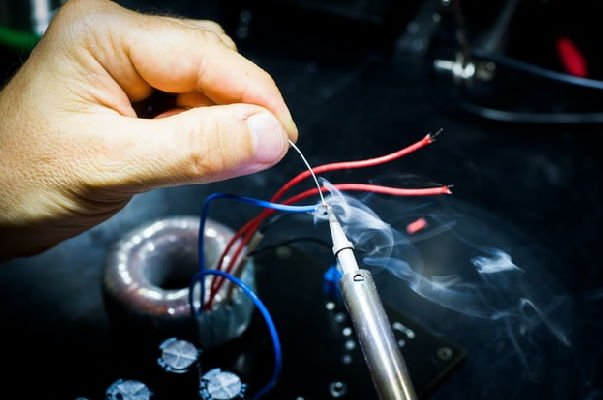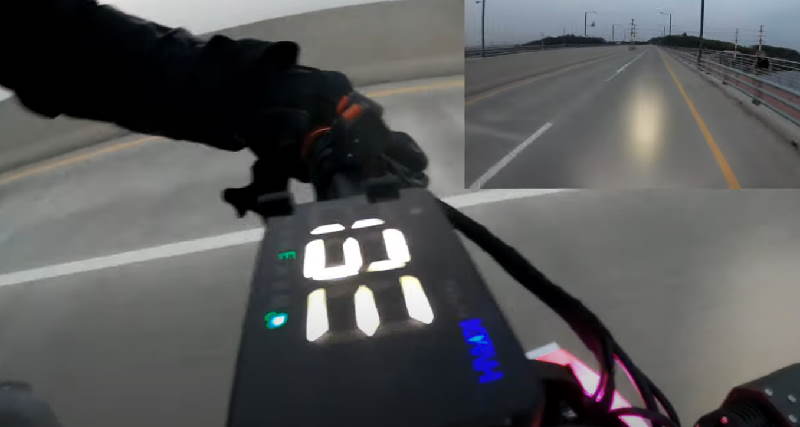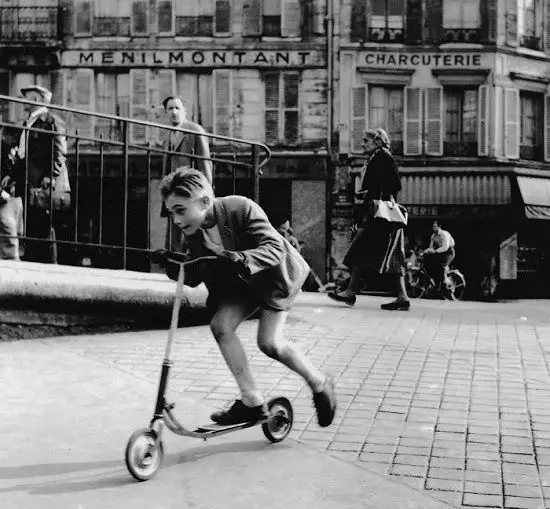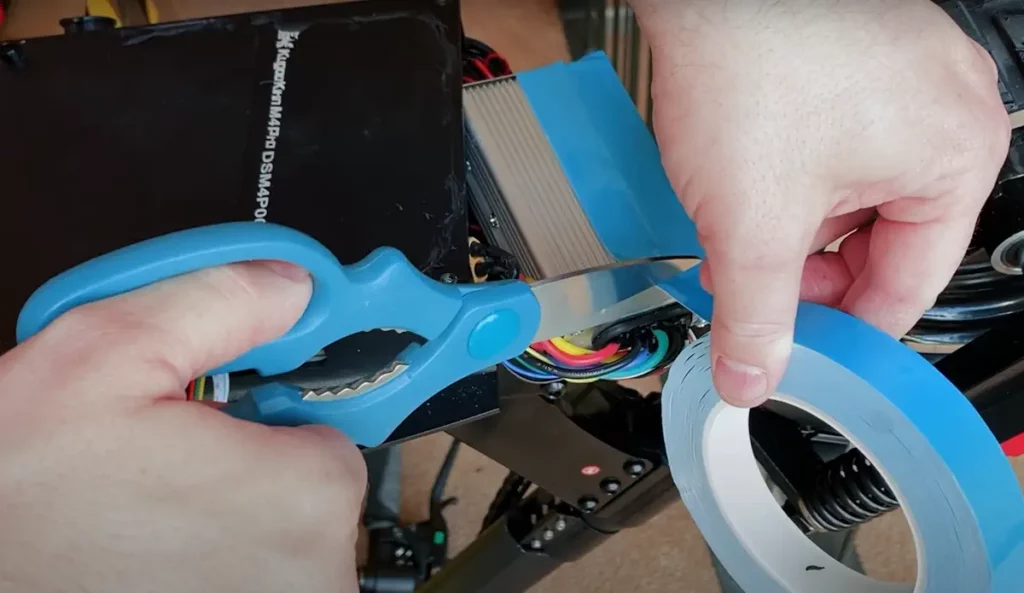Electric scooter performance can feel overwhelming at first, with terms like volts, watts, and amperes.
This guide makes it simple, so you can choose your scooter with confidence, no expert required.
Electric scooter wattage and power

The most crucial factor for an electric scooter is power, often referred to as wattage, which indicates the motor’s strength, measured in Watts (W).
Wattage significantly influences key performance aspects.
The following will largely depend on wattage and not much else:
- the top speed that the scooter can reach
- the maximum angles that the scooter can climb
- the maximum load that the scooter can carry
Motor power also affects the range.
Budget scooters typically have 200-600 Watts, resulting in speeds of 15-22 mph (25-35 kmh).
However, the most powerful and fastest electric scooters can reach wattages of 10000 Watts of real power and go as fast as 60 mph / 100 kmh, or even more!
If you want a deeper dive into the technical details, I suggest starting with the Wikipedia page on Watts.
Real vs peak motor power
Electric scooter brands commonly describe motor power as either real power or peak power.
The motor’s output can fluctuate over time due to thermal limits, impacting performance and longevity.
The motor’s consistent power output is called real power, which is the most accurate metric.
Sometimes, the motor can briefly produce more power, known as peak power. Brands often advertise peak power without specifying, which can make their scooters seem more powerful.
Keep this in mind when considering motor power – if it doesn’t specify, assume it’s peak power.
To estimate real power when you only have peak power, assume it’s roughly 30% to 90% of the peak power. On average, real power is about 57% of peak power.
For an easy conversion, use the real and peak motor power converters.
How many Watts do electric scooter motors have?
Electric scooters typically have nominal wattage between 250 and 5000 Watts, with an average of 1159 Watts.
This average is skewed by high-power outliers, and most popular scooters fall within the 250-1000 watts range.
Electric scooter battery capacity
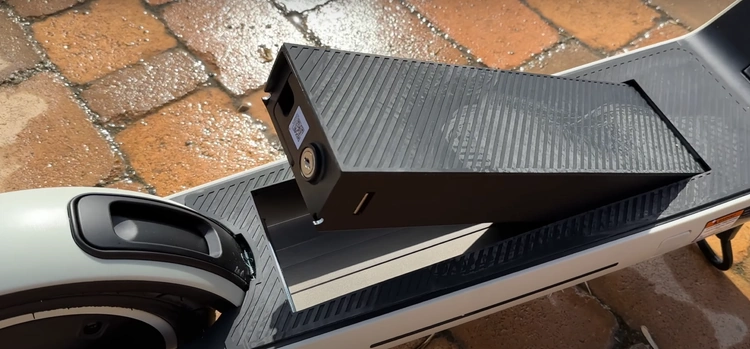
The second key performance metric for electric scooters is the battery’s energy storage capacity, often referred to as electric charge.
This term simply indicates how much energy the battery can store, measured in Watt-hours (Wh), and it determines the scooter’s maximum range on a single charge.
Budget scooters usually have 150-500 Watt-hours, offering a range of 9 and 25 mi / 15 and 40 km.
In contrast, the most powerful and expensive scooters with great ranges can go well over 60 mi / 100 kilometers on a single charge.
Manufacturers may provide battery metrics like capacity in Ampere-hours (Ah) and voltage in Volts (V). To find the battery’s energy storage capacity in Watt-hours (Wh), multiply Ah by V using this formula:
1 Wh = 1 Ah * 1 V
Formula for battery energy storage capacity
You can see the battery calculators to convert between these:
To extend the range, manufacturers can raise either the Ampere-hours or the Volts of the battery, which increases its capacity.
How much battery capacity do electric scooters have?
On average, electric scooters have a 700-watt-hour battery capacity.
Smaller batteries may have 100 Wh, while larger ones can go up to 3000 Wh. Most commuter scooters range from 250 to 700 Wh.
Electric scooter voltage
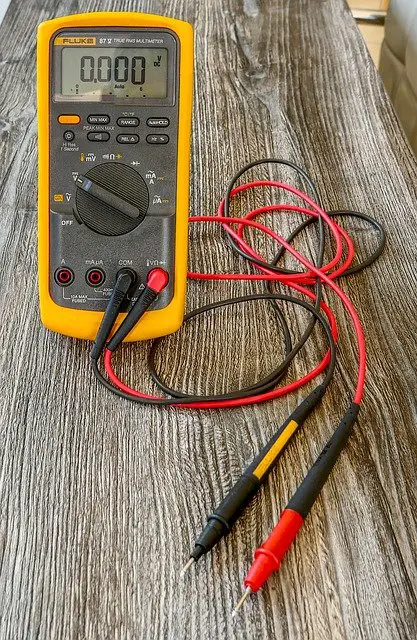
Voltage can be a bit complex, but for this guide, we’ll offer a simple explanation: Voltage determines how quickly energy moves between electrical components – higher voltage means faster transfer.
The energy in the electric scooter system moves in a direction as such:
Power outlet -> Charger -> Battery -> Motor
Electrical components like the charger and battery have input and output voltages. The motor only has an input voltage.
Battery voltage is usually referred to as output voltage and commonly ranges from 36V to 48V. High-powered scooters use higher voltages to meet the motor’s energy needs.
Motor input voltage is rarely specified, usually matching or slightly lower than the battery output voltage.
Chargers have both input and output voltages – input determines how fast it draws power from the grid, while output affects the charging speed.
Overvolting an electric scooter
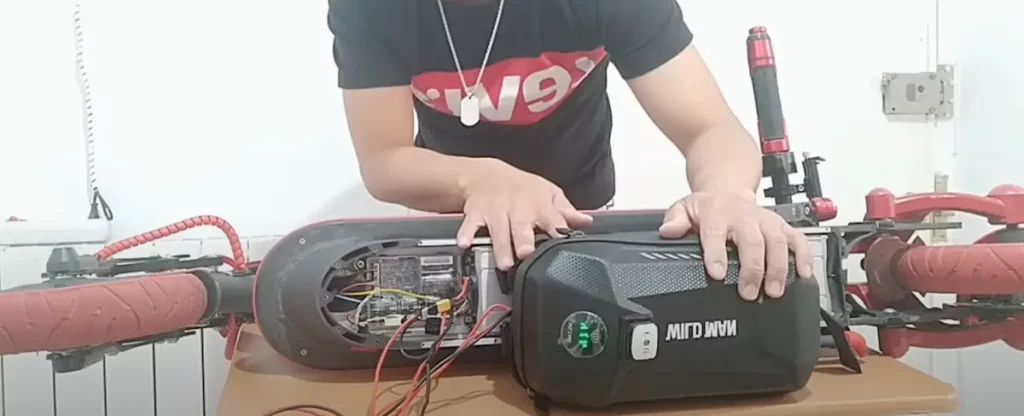
Overvolting an electric scooter can mean:
- replacing the original battery with one with a higher voltage
- adding an extra battery
These factors can lead to increased voltage, which means more battery capacity and potentially more motor power. Ensure your motor can handle the higher voltage.
How much voltage do electric scooter batteries have?
Electric scooter batteries have 47 Volts on average. Most of the popular electric scooters will have either 24 V, 36 V, 48 V, or 52 V batteries.
The battery with the highest voltage currently is the Rion2 RE90, which has 96 Volts.
Electric scooter torque
In electric scooters, torque measures the motor’s work capacity.
More torque means higher top speed and better climbing ability. Torque is the force that causes rotation and is measured in Newton-meters (Nm).
It’s rarely specified by scooter manufacturers, making it one of the least discussed performance metrics.
Electric scooter charging time
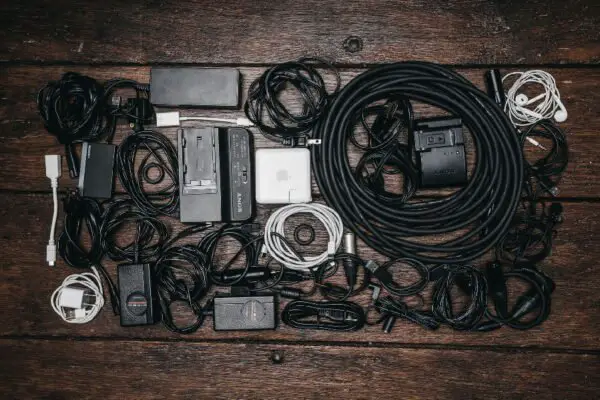
Charging time is the duration to go from empty to full battery, assuming the battery isn’t too old, as performance declines over time, increasing charge time.
Manufacturers typically provide charge times, and you can calculate it if you know the charger’s current (in Amperes, “A”), battery capacity (in Watt-hours, “Wh”), and charging efficiency.
The formula then looks like this:
Charging time (h) = Battery energy capacity (Ah) / [Charger current (A) * Charging efficiency (%)]
The formula for calculating the charging time for your electric scooter
See the electric scooter charging time calculator for a simpler way to figure this out for your scooter.
How much time does it take to charge an electric scooter?
Electric scooters typically take 3 to 8 hours to fully charge, with some outliers ranging from 1 to 25 hours. On average, it’s about 8 hours.
To determine your scooter’s specific charge time and enhance battery life, refer to the full guide on electric scooter charge time.
The big picture of electric scooter performance
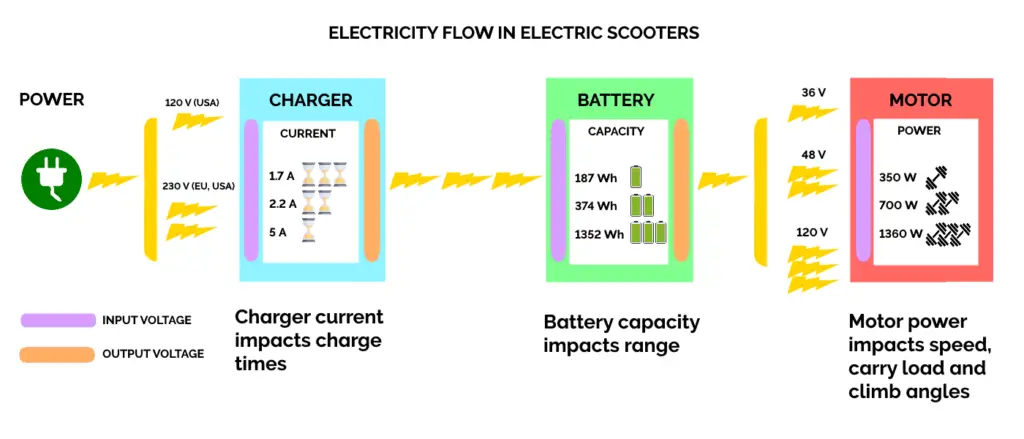
Take a broad look at the electric scooter components and their interplay.
This illustration explains the power flow through these components.
Electric scooter top-speed
The scooter’s top speed is the maximum it can reach in ideal test conditions, often differing from real-world use. Tests involve new scooters on flat, obstacle-free roads with a 165 lbs / 75 kg rider.
In the real world, you will rarely ride on a smooth and straight road, without having to stop and a lot of people weigh more than 165 lbs.
Despite ideal test conditions, all manufacturers test similarly for competitive advertising.
Expect your scooter to reach its advertised top speed, but slight variations can occur.
How fast can electric scooters go?
The average electric scooter’s top speed is about 25.86 mph / 41.62 kmh, but this is influenced by the fastest racing scooters hitting up to 100 mph / 160 kmh.
Budget scooters usually top out between 15-25 mph / 25-40 kmh.
A scooter can come with a speed limitation installed so that it abides by local traffic laws.
For example, many scooters will come limited to 15 mph / 25 kmh, even though they are able to reach much higher speeds.
Electric scooter range
Electric scooter range is the distance it can travel on one battery charge. Manufacturers often base these values on ideal conditions, using the most energy-efficient scooter mode.
In reality, you won’t always ride in this mode, so your actual range can vary due to your riding style.
You can check out the electric scooter range calculator to get a general idea of how much real range you will get from your specific scooter.
Here is a video of me talking about the longest-range electric scooters.
How far can electric scooters go on a single charge?
The average electric scooter range is 36 mi / 58 km. Ranges vary widely, from 6 mi /10 km to 93 mi / 150 km.
Typical scooters cover 9 and 25 mi / 15 and 40 km, while higher-end ones reach 31 mi / 50 km or more.
Electric scooter load capacity
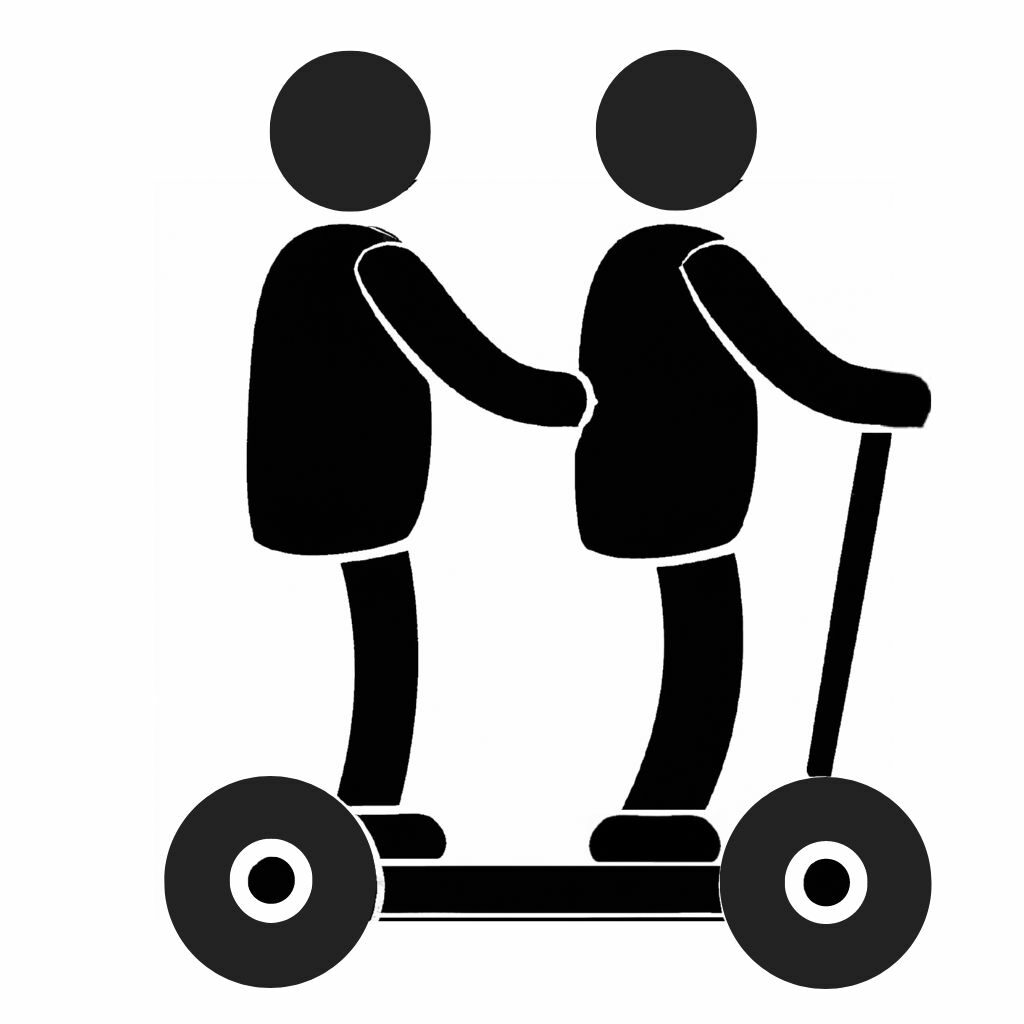
The load capacity, often called maximum weight, is the maximum weight that the scooter can carry on its deck without suffering performance hits.
Naturally, the more load the scooter has to pull, the less performant it will be, both in terms of speed and distance, but also for going uphill.
Since we are talking about electric scooters for adults, a significant part of them will be able to carry at least 220 lbs / 100 kg. In fact, many can actually carry up to 330 lbs / 150 kg.
Users on the heavier side can still ride without much worry, even if their weight surpasses the weight limit of the scooter by a little.
However, there will typically be a noticeable degradation in performance.
Heavier users should consider getting a scooter made to support greater weights.
Here is a video of me talking about the best electric scooters for heavy riders.
How much weight can electric scooters carry?
Electric scooters have a weight limit of 267.64 lbs / 121.4 kg on average. Most scooters will have a weight limit of 220-265 lbs / 100-120 kilograms. The electric scooters best equipped for heavy adults will be able to carry up to 660 lbs / 300 kg.
You can take a look at the full guide on electric scooter weight limit to get a better picture of weight capacity and the best models for heavy adults.
Electric scooter climbing angle
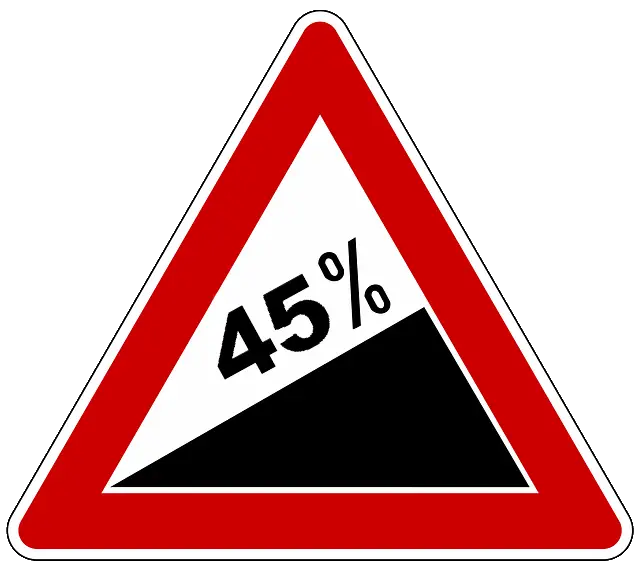
The climb angle is the steepest slope a scooter can ascend with a rider.
It’s often challenging to define because it varies with factors like distance and momentum. Manufacturers rarely provide this metric.
The average scooter can climb hills no steeper than 22 degrees. Most scooters will be fairly decent at taking you uphill when the hill is not too inclined. They will still struggle with steeper hills.
There are two ways to report climbing angles – degrees and percentages.
Degrees are a more common and official measurement, but each can easily be converted into the other. Here are the formulas:
Degrees = Tan-1 (Slope Percent/ 100)
Slope Percent = Tan (Slope Degrees) * 100%
Degrees and percentage conversion formulas.
You can use angle calculators for this task too.
Research beyond manufacturer claims when it comes to climbing angles, some numbers may be unrealistic. Seek tested and proven climb angle data from sources like our blog or YouTube demonstrations.
How much can electric scooters climb?
The climbing angle of electric scooters is 19.11° on avereage. The climbing angle in individual scooters varies from 6° all the way up to a claimed angle of 65° for the best climbers.
Most of the popular scooters’ climb angles will be somewhere between 15° and 35°.
When I was looking for an electric scooter the biggest factor was the climb angle, because I live in a city with a lot of hills.
I tried the Kaboo Wolf King and it made my life easier, since it’s one of the best climbing scooters around.
Electric scooter waterproof (IP) rating
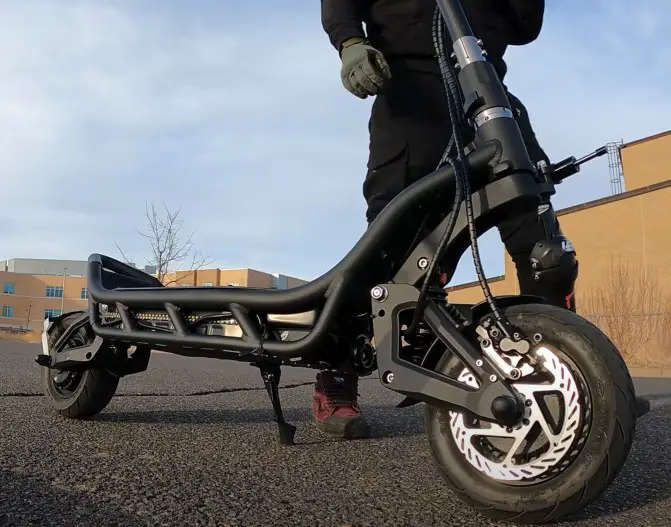
The IP rating of the electric scooter is a value indicating the protection a scooter has against foreign particles.
It consists of two digits, like for example “IP54” or “IP67”.
The first digit indicates the protection against solid particles, like dust or dirt. The second digit indicates the protection level against water.
When we’re talking about how waterproof an electric scooter is, we are always looking at the second digit. The higher the digit, the bigger the protection level.
Many brands don’t specify an IP rating, likely because their scooters lack such protection. If you can’t find the IP rating online or in the manual, the scooter may not be very waterproof.
We commonly use two terms for water protection: waterproof and water-resistant.
Waterproof scooters should have an IP rating of at least 7, allowing them to withstand submersion in 1-meter deep water for 30 minutes and still function.
Most scooters have an IP rating of 4, making them water-resistant, and protecting against splashes from all angles.
Check the post about waterproof electric scooters to find out which scooters are best for rainy or snowy environments.
High-performance electric scooters
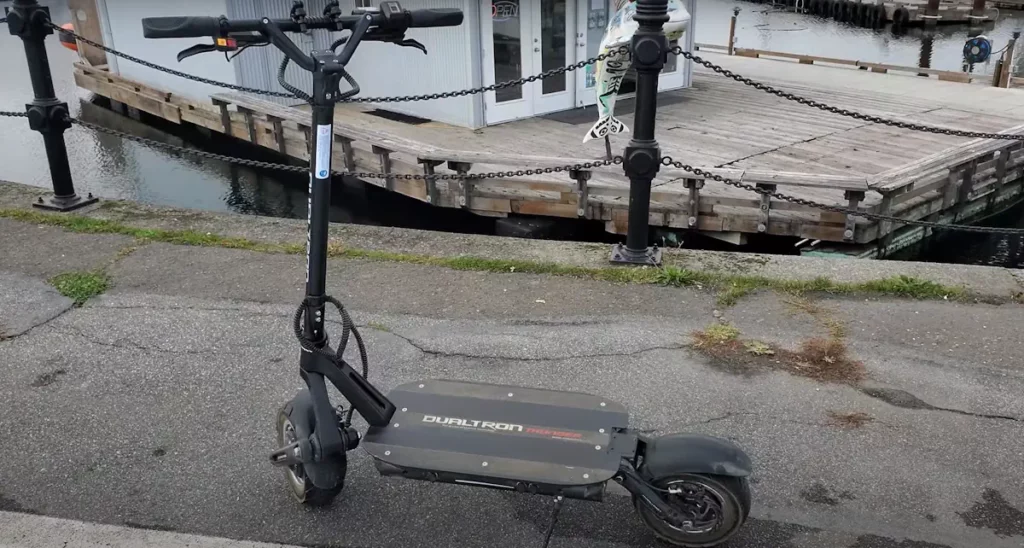
We can’t talk about performance and not mention the most ridiculously powerful electric scooters.
While most commuting or budget scooters will have decent performance, the most performing machines will be out of this world, and even have dangerous amounts of power.
There are models that are simply insane.
They have top speeds of over 50 mph / 80 kmh, and about 6 of them have top speeds of 62 mph / 100 kmh.
Many of them will have 62 mi / 100 km ranges, amazing climbing angles (some will even climb angles as steep as 50 degrees), and they will be prepared to handle very heavy loads.
Almost all of these monsters will cost more than $2000, and some will cost a lot more than that.
You can check out the full post on the most powerful electric scooters to see who these heroes are, and maybe make you think if you want a bit more adventure…
How to choose an electric scooter
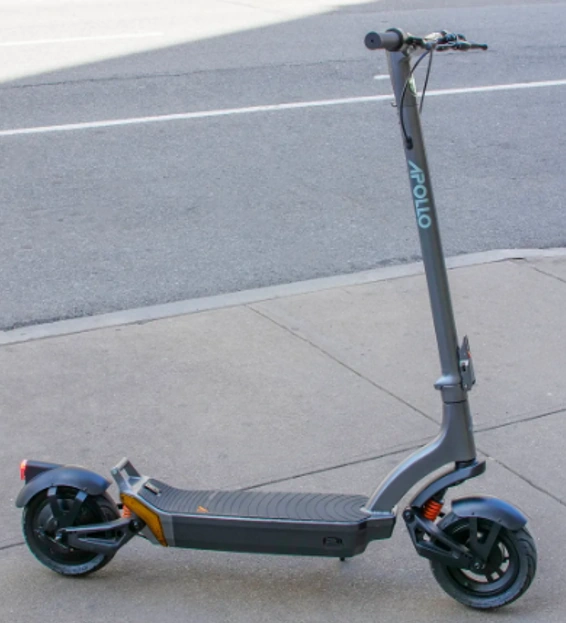
When choosing your scooter, performance stats and features should play a vital role in your choice.
But they shouldn’t be the only ones. Always consider:
- the price of the scooter
- the looks and the design of the scooter
- the brand
- the popularity of the scooter
- how well it has been proven to work
Still, raw performance numbers are a great starting point.
Start with your needs.
When choosing an electric scooter, start by assessing your specific needs.
If you have long commutes or plan extended trips, focus on long-range scooters. For heavier individuals, select scooters designed for heavier adults.
In hilly areas, prioritize a good climbing angle. If portability is vital, opt for a lightweight scooter.
Don’t forget to consider customer support, delivery times, and feedback from other owners to ensure satisfaction.
Finally, choose a scooter that visually appeals to you, as it should fulfill both your practical requirements and personal preferences.


